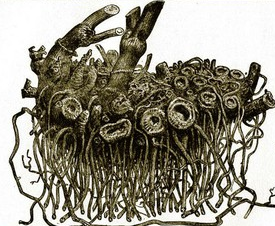
non-fiction
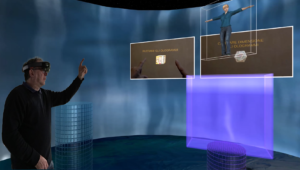
Protected: Augmented Learning – The development of a learning environment in augmented reality
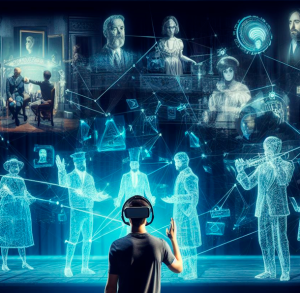
Total Theatre and the Transformative Potential of Augmented Total Theatre In Arts, Culture, and Education

Augmented Total Theatre: Shaping the Future of Immersive Augmented Reality Representations
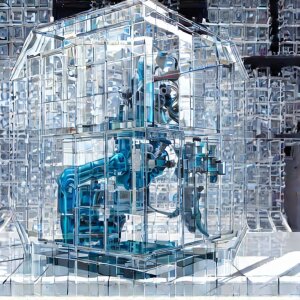
Augmented Classrooms: A Generator Of Augmented Reality Environments For Learning

Towards a definition of multimediality
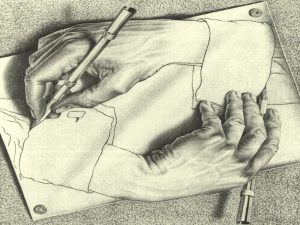
Io, l’autore e il narratore
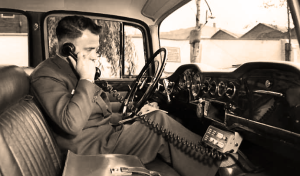
C’era una volta… la passione infinita: breve storia del cellulare

Hypertextuality
fiction
Hypertextuality
The line is made up of an infinite number of points, the plane of an infinite number of lines; the volume of an infinite number of planes; the hypervolume of an infinite number of volumes... No, unquestionably this is not --more geometrico-- the best way to begin my story. To claim that it is true is nowadays the convention of every made-up story. Mine, however, 'is' true.
It is with these words that Borges-the-character -- alter ego of Jorge Luis Borges-the-writer -- begins his tale about the Book of Sand, the metaphysical book that will torment his sleep. It is during a casual meeting with a Bible seller that Borges discovers the Book.
I opened the book at random. The script was strange to me. The pages, which were worn and typographically poor, were laid out in double columns, as in a Bible. The text was closely printed, and it was ordered in versicles. In the upper corner of the pages were Arabic numbers. I noticed that one left-hand page bore the number (let us say) 40,514 and that facing right-hand page 999. I turned the leaf; it was numbered with eight digits. It also bore a small illustration, like the kind used in dictionaries -- an anchor drawn with pen and ink, as if by a schoolboy's clumsy hand.
... [A]s if confiding a secret, he lowered his voice. "I acquired the book in a town out on the plain in exchange for a handful of rupees and a Bible. Its owner did not know how to read. I suspect that he saw the Book of Books as a talisman. He was of the lowest cast; nobody but other untouchable could treat his shadow without contamination. He told me his book was called the Book of Sand, because neither the book nor the sand has any beginning or end." The stranger asked me to find the first page.
I laid my left hand on the cover page and, trying to put my thumb on the flyleaf, I opened the book. It was useless. Every time I tried, a number of page came between the cover and my thumb. It was as if they kept growing from the book.
"Now find the last page."
Again I failed. In a voice that was not mine, I barely managed to stammer, "This can't be."
Still speaking in a low voice, the stranger said, "It can't be, but it 'is'". The number of pages in this book is no more or less than infinite. None is the first page, none the last. I don't know why they are numbered in this arbitrary way. Perhaps to suggest that the terms of an infinite series admit any number."1
In the introduction to his tale, Borges tells us that the Book of Sand is a volume of incalculable pages, an inconceivable and nightmarish object, "an obscene thing that defames and corrupts reality".
In 1945, thirty years before the time Borges would conceive his Book of Sand, Vannevar Bush, engineer and Director of the Office of Scientific Research and Development, publishes in the Atlantic Monthly the essay "As We may Think," describing therein a project for the realization of Memex, "a device in which an individual stores all his books, records, and communications, and which is mechanized so that it may be consulted with exceeding speed and flexibility."2 A variety of coordinates defines the theoretical field within which Bush operates for the development of his device: Leibniz's calculating machines, the theory of systems, automation, studies on filing procedures, "arithmetical electric machines" (ancestors of our contemporary computers), the first researches on connectivism and the parallel distribution of mental processes.
Basically, the Memex is an optical-mechanic desk with "slanted translucid screens" capable of showing words and images: books, drawings, pictures, notes, newspapers, journals, and, in general, any sort of information that has previously been stored on microfilm. Moreover, the Memex allows the extension of its own data base, since new documents can be dry-photographed and microfilmed through a device activated by sets of levers. The microfilms are filed according to an efficient system of indexing based on association, so that not only does the user have an easy and fast access to whatever document he is looking for, but he can also link together two different documents, and create a new microfilm that makes that correlation permanent. In brief, the Memex is, as Bush himself tells us, an enlarged intimate supplement to the user's memory; it is an attempt mechanically to duplicate the processes of human mind.
It is not difficult to believe that, in telling us the story about his metaphysical monster, Borges did not know anything about the Memex. And, of course, Bush could not have read Borges's story while thinking about his flexible system enabling knowledge filing. Yet both Borges's and Bush's thoughts converge toward the same object: the book of books, the library of libraries, an infinite book. A book that, within a finite space, can contain an infinite (or, at least, indeterminate, and, in any case, ideally endlessly extendable) amount of information. As a matter of fact, the Book of Sand does not provide (nor it wants to provide) us with the instructions for its construction, and, therefore, it remains the metaphysical object of a fantastic tale. On the other hand, Memex was never constructed. Although Bush believed that, during his age, complex and reliable machines with interchangeable parts could be constructed with great economy of effort, he never saw the realization of his machine. The idea of the magic book was in the air, ready to be used again, but the technology could not yet concretely produce it.
After Bush's futuristic approach to the infinite book, twenty years have to pass by before somebody else takes an interest in the problem. In 1962, using Memex as a starting point, and believing -- as Bush did -- that the computer can be a valid instrument to increase the power of human intellect and imagination, just as the machines had augmented the performance of the human body, Doug Engelbart (the inventor of the word processor and the mouse), together with the psychologist J. C. R. Licklider, develop a system called Augment/NLS. The system is capable of filing and integrating a variety of pieces of information (articles, notes, comments, footnotes, projects) within a sort of "collective electronic journal," so that, through the computer, those pieces of information are shareable among (and re-shapeable by) different users.3
Yet, it is only Theodor Nelson who, in 1965, first speaks about hypertext, finally coining a name for the infinite book. Nelson says that the hypertext is "non- sequential writing, a branching text that allows the reader to make choices; it is something that can be best read in front of an interactive screen. [...] With a hypertext we can create new forms of writing that reflect the structure of what we write about; and the readers can choose different paths according to their attitudes and the stream of their thoughts, in a way until now believed to be impossible."4 At the time Engelbart works on Augment/NLS, the electronic components are already more easily available and more reliable: the electro-mechanical technology developed when Bush formulated his project for the Memex has been replaced by the electronic technology; the slanted translucid screens necessary for the projection of microfilms are now computer monitors; the mechanical levers have become buttons activating functions according to a program; in place of the microfilms, reproducing words and images on celluloid sheets, there are sequences of binary digits, easily storable on magnetic supports, and easily and quickly retrievable. So Nelson has the chance to conjugate Bush's ideas about the Memex with Engelbart's collective electronic journal, and he uses the new versatility of the electronic technology to elaborates Xanadu, a system that is "not only particularly easy to use for the unexperienced readers, but also easily extendible into extremely complex applications."5 This device, created to satisfy an unlimited but ordered growth of documents, should be thought of as an editing system for the storage of universal knowledge.
Nelson's basic idea is a reformulation of Bush's: since each portion of knowledge --a document-- is somehow connected to many other portions of knowledge, we need to elaborate a system enabling us to access both the single document, and all the other documents historically or logically linked to it. Starting from this presupposition, Nelson finds it convenient to organize the whole human knowledge in what he calls literature, that is, a "system in evolution of interconnected documents"; these documents constitute (and are part of) a complex, world-size network, whose portions are all accessible via computer by an unlimited number of users. According to this conception, the hypertext no longer is a form of text, but a new "medium" allowing us to read and/or interact (that is, to create personal reading sequences personal links between texts, and personal annotations as well) with a whatever portion of literature by means of a single and efficient device.
During the last years, many efforts have been made so as to make real something that, during Bush's age, could only seem a mechanical attempt to give shape to a dream, or to a structure of consciousness. The concrete realization of Xanadu (although in a reduced version, since there aren't yet the adequate technological, social, and economical conditions for the realization, on a world-wide scale, of the system for the management of the global literature as conceived by Nelson6) has become just one of the first steps of a more and more evident trend toward the production and use of hypertextual documents. Actually, we can find several programs for the generation of hypertexts (for example, Hypercard, Story Space or Toolbook for personal computers, and the HTML language for the World Wide Web, the large hypertextual space in Internet), and the market is opening up to already-made hypertexts (handbooks, encyclopedia, literary works, games), accessible both by the users of personal computers and by the users of the many networks of computers spread all over the world. Moreover, the textual analyses carried out within the structural and post-structural discourses have developed a more solid, theoretical context for the multiple and disintegrated text.7
By progressively extending their influence on a larger number of users, hypertexts, and, in general, a hypertextual logic not only will have a substantial role in reshaping the criteria through which information is created and exchanged, but will also dismantle the solidity of many paradigms now in use on the notions of text and textual analysis, and on the relationships between the authors and readers/users of multimedial documents.
On the basis of what we have seen, we should now try a closer approach to the magic book of books. At a first level of approximation, we can think of a hypertext as a set of pages connected one to another through sets of links. It should be noticed that such a basic definition is easily usable also when we want to identify the printed (or chirographic) texts we are familiar with. In this way, we can still maintain a contact between the conventional text and a whatever kind of hypertext, so as to be able to think of the hypertext as an evolving extension of the traditional text. On the other hand, the link text-hypertext is weak. Of course, each conventional text can be assimilated within a hypertext; and, in some cases, it is also possible that the content of a hypertext coincides with that of a given, traditional, verbal text. But if we deal with hypertexts we usually need to free ourselves from both a linear and fixed structure --typically used by the printed text-- and the medial matter --the clay, the papyrus, the paper, the plastic-- that most of the times is the vehicle for the contents of that structure. The computer is the medium for the production and reception of a hypertext; most of the times the access to the information contained in the pages of a hypertext is non-linear; those pages have a multimedial character; the fixation of a certain amount of knowledge within a certain amount of pages of a hypertext, and according to a particular organization, is only temporary, and subjected to a continuous revision and extension.
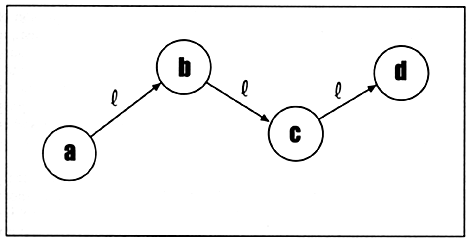
Figure 1
The most common metaphors used in describing hypertexts are the network, the spider web, a game of Chinese boxes. It is easy enough to understand the reasons for such images by looking at one possible way of representing the organization of the pages of a traditional text (Figure 1) and of a hypertext (Figure 2).
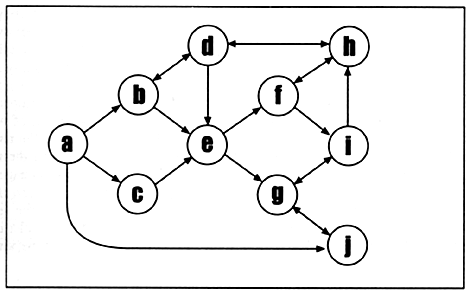
Figure 2
In both figures each letter within a circle represents a page of a text, or a particular "node" of a hypertext, that is a portion of the (hyper-)text easily identifiable by means of a whatever procedure of segmentation. Most of the time we can identify the page of a printed text as that portion of text contained within the borders of a sheet of paper with a given size and printed in accordance with a variety of typographic conventions. The hypertextual page seems to have similar characteristics: it is that portion of hypertext within a frame with the size of the monitor. But beyond the apparent, and almost banal similitude in the description of the two pages --both are inscribed within a finite space-- there exist many substantial differences:
(i) multimediality: each hypertextual page is multimedial, that is, is a portion of a document constructed through the integration of different medial matters (at the moment, mostly verbal, visual and acoustic). Moreover, the hypertextual page can be thought of as a sort of electronic control-station. From the hypertextual page it is possible to access and coordinate a variety of multimedial applications: graphic programs for the production of pictorial (synthetic and photographic) images, and vectorial images (diagrams, schemata, tables); programs for the processing of verbal and visual components (word processors, editors, etc.), and for the creation of synthetic, 'natural', and oral-verbal sounds.
(ii) dynamicity: in a conventional (even if verbal and visual) text, the shapes and the layout of its constitutive elements are fixed at the moment the text is printed, and can be modified only if a new edition of that text is produced. Different is the case when we work with hypertexts. The constitutive elements of each hypertextual page, also called objects (pictorial images, graphs, diagrams, formulas, written or spoken verbal elements, sounds, noises, musical sequences, etc.), are constructed with different medial matters, and are dynamically linked to the page, so that it becomes possible to modify (not only during the process of composition, but also during the act of reading, that, in this way, also becomes act of re-writing) their shapes, their positions, and their functions. Moreover, each hypertextual page can easily include, anywhere within its local domain, new objects, each of which, in turn, can support its own programmable function(s).
(iii) interactivity: through the use of "clickable buttons8 the reader has the opportunity to introduce on the page new objects that, although originally linked to the page, are not necessarily perceivable when the page is first accessed. We can think, for example, of diagrams, drawings, pictures, animations, and notes that are connected to given areas of the page, and activated (that is, made perceivable) only in accordance with certain choices made by the reader through the use of certain buttons. The new pieces of information work as comments on (or further explanation of) some portions or elements of the page. However, the buttons can also serve other purposes. Since the number of pages of a hypertext can be very large --indeed, potentially infinite-- and since the multimedial objects present in each page can be constructed by using a variety of applicative products, it becomes necessary to include in each hypertextual page tools that facilitate both the navigation in a complex structure, and the creation, at any time, of whatever new multimedial object is needed. Then, the buttons become the sources for the access to these navigational facilities. On demand they can:
- produce information on the meaning, the function(s) and the use of the different objects present within a hypertextual page;
- produce information on how to access the applications used or usable for the construction of multimedial objects;
- produce (structural and thematic) local and/or global maps of the territory of information controlled by the hypertext, so that, at any given moment, the reader can know her position within the hypertext, and the direction for further possible navigations; and
- activate sets of commands allowing the navigation from one page to another.
Until now, in analyzing Figure 2, we have only considered those elements that we have identified as nodes of a hypertext. But in taking into account also the lines connecting different couples of nodes, we should abandon the oversimplifying assumption according to which each node of a hypertext is identical with one of its pages. As a matter of fact, each element --an object-- of a hypertextual page (a button, a word, an image, etc.) containing a unitary fragment of information, and connectable with another object, can be thought of as a node of the hypertext. In this way, we can distinguish the nodes according to the different medial matters they are made of (graphic/iconic-nodes, verbal-nodes, acoustic-nodes, and, in the future, maybe also tactile-nodes and olfactory-nodes), and according to the informative contribution, more or less local, they supply (object-nodes, page-nodes, hypertext-nodes).
On the basis of such specifications it should be easy to see that the object previously identified as hypertextual page becomes now a page-node, that is, a portion of a multimedial document centralizing and coordinating a series of object-nodes, each of which has to be conceived as a (temporarily) minimal signifying hypertextual unit. If now we go back to Figure 2, we can finally define the lines connecting different portions of the hypertextual document: each of these lines -- hypertextual links -- shows the existence of a relationship between two nodes of the hypertext. The type of relationship is determined on the basis of the medial matter the nodes are made of, or on the basis of the kind of association(s) the author of the hypertext wants to establish between the data contained in each couple of nodes, so as to fulfill one of the more or less local tasks for which the hypertext has been created. By means of these links we can connect: a) different object-nodes (each of which can be a verbal-node, a graphic-node, an acoustic-node, or a node obtained through the integration of different pieces of information created with different medial matters) contained in the same page-node; b) an object-node of a certain page-node with a different page-node, or with an object-node of a different page-node; and c) an object-node of a page-node with a hypertext-node (that is, an object-node or a page-node belonging to a different hypertextual document).
In all these cases, it is by using some buttons that the user can "jump" from one node to another. Then, we can extend the concept of interactivity, already utilized to describe one of the properties of a hypertextual page, to the whole hypertext. We can say that a hypertext is interactive because it allows the reader to choose for his or her own personal and often unique path of navigation through the nodes, and for the operations to carry out with the object-nodes present in each page-node.9
Because of their working with nodes and links, hypertexts favor a reading that goes from-object-to-object, from-theme-to-theme, from-document-to-document. Of course, it is easy to imagine that this form of reading is inevitably affecting the way readers approach, interpret, and use the pieces of information found in hypertexts. Then, we need to have a firmer understanding of what, in a general sense, reading hypertexts is, and we also need to see how this particular form of reading differs from the more traditional forms to which we are accustomed. In order to do so, we now also consider two other important properties of hypertexts: non-linearity and unlimitedness.
During the reading of a traditional printed or manuscript text the reader is forced to go from left to right, from up to down, from page 1 to page 2 and then to page 3, and so on. If we consider a verbal written text whose pages are organized according to a structure similar to the one presented in Figure 1, in which each circle with a letter stands for a page of the text, we can describe the reading of the text as the act of production of the sequence: [a-b-c-d]. Of course there are cases, especially in fiction and poetry, in which the author of a text wants the reader to follow more than one reading path; and it is often the case that the reader has to go back to sections that he or she has already read in order to better understand the meaning of those sections;10 but in most occasions, the above sequence can be assumed to respect the design chosen by the author of the text according to some conventions of reading, so that the reader usually takes for granted that page 2 will follow page 1, and will be followed by page 3.11 In any case, the sequence represents the unique and unchangeable order of the elements of the text thought of as physical objects, or as chains of signifiers to which the reader has to assign meaning and, in so doing, produce an interpretation.
The situation is very different when we move through pieces of information organized according to structures similar to the one presented in Figure 2. By using buttons in the first node, the node [a] (which can be a page-node, but also an object-node), we can reach three different nodes: [b], [c] and [j]; and from each of these nodes we can go to others. In this way, from [a] we can reach [j] through different possible paths ([a-j], [a-c-e-g-j], [a-b-d-h-f-i-g-j]; or we have a chance to go back to a node we have already examined, and from that, on the basis of the knowledge acquired through the reading, to go toward nodes not yet explored (for example, the sequence [a-b-d-h-f-h-d-e...]). These are some of the possibilities allowed by a non-linear (or discontinuous) approach to the textual units of hypertexts.
Certainly, hypertexts organized according to a structure similar to the one shown in Figure 2 are still closed and finite textual units, in which the number of possible navigable paths is determined by the number of nodes and by the types of links connecting the nodes one to another. On the other hand, similar hypertexts make it possible for the reader to interact with the text (see note 9), and to choose both the steps to go through during the reading, and the quality and quantity of the operations to carry on with the multimedial materials encountered while navigating.
Another important property characterizing hypertexts, and connected to their being non-linear, is their unlimitedness. We have seen that each hypertextual page-node can have a variable (and, sometimes, very large) number of object-nodes; a number that is theoretically limited only by the capabilities of the hypertextual program. The same principle applies, more in general, to nodes: ideally, each node can be linked with other nodes belonging to the same hypertext, or with nodes present in other compatible hypertexts. Moreover, each node can be considered as the starting-point for new branches/paths that can be added at any time. And of course, by allowing this process of expansion and remodeling of their own structures and contents, hypertexts strongly encourage the integration of portions of knowledge that, although potentially connectable, are normally unrelated.
Given the importance of the integrative power of the hypertexts, we should try to examine it more in detail. Let us consider a simple document, for example the text represented in Figure 1. As we have previously done, we can assume that the text is verbal and printed, since in our culture, strongly affected by the typographic technology, we often identify texts with printed texts. Like any other printed text, our text [T] contains a finite amount of pieces of information formally organized according to a series of choices made by the author. These pieces of information compose a local knowledge [LK] about a particular portion of world [WP]. By using hypertexts, the text [T] can be easily integrated within a non-linear structure organizing in a more comprehensive way a serious of local knowledges [LKi] given in other texts [Ti] somehow related to that portion of world [WP] (see Figure 3).
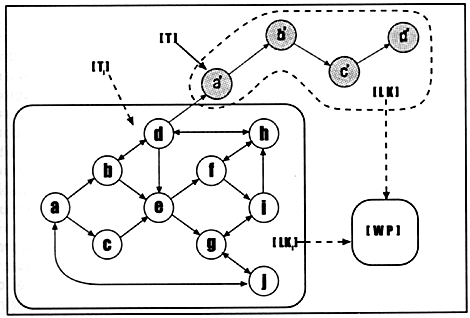
Figure 3
The inclusion of [T] within a structure organizing the elements of the hypertexts according to non-linear logic should not be considered an operation affecting the structure of [T]. In the hypertext, the branch reproducing [T] will still maintain its original linear form, so that the access to [T], even though through the monitor, can still be linear. Yet, on a larger scale, things would be different (although, in this case, it is also possible to conceive a "non conventional" reading of [T], starting from anyone of its pages/sections and proceeding --through a series of non-linear jumps-- to other pages/sections). Contrarily to what would happen if [T] were an isolated textual unit, through that process of integration we can see and use [T] as the temporary terminal text-node of a complex structure that allows its own extendibility from each of its nodes. This means that although we can still read [T] linearly, we can also choose to deal with [T] or with each of its sections according to a supplemental non-linear logic. It is then in this sense that it becomes reasonable to think --as Nelson does when he proposes Xanadu as an integrated editing system for the filing of knowledge-- about the realization of a global literature including and connecting in a world-wide web all the possible multimedial documents --not only those already created, but also those that will be created in the future.12
We have seen that a hypertext is a potentially unlimited network made of nodes and links, with a non necessarily linear access, organized according to a defined but modifiable and extendible structure; it is a concrete object created through the computer and usable on the computer. Each node is a segment of a complex multimedial communicate13 that can contain: a) information on a given domain of a possible world, or portion of the world; b) a set of commands through which the user can have instructions on how to access the material contained in the node, and on how to navigate from that node to another; c) a set of commands enabling the transition from the node to another; and d) a set of commands enabling the user to create new nodes and new links.
On the other hand, until now we have only briefly analyzed the main properties of hypertexts in a mostly structural way, that is, without taking into account the fact that such properties introduce substantial changes into the processes of creation and perception of multimedial communicates. For centuries our Western culture has used the printed medium as the privileged tool for the production, the transmission and the re-production of knowledge, and, quite often, it has tried to organize this knowledge according to a linear and propositional logic. But the hypertextual logic breaks away the limits imposed upon us by such linear thinking, and forces us to move on toward a reshaping of the ways we use in order to acquired, organize, and re-produce knowledge. So it is time now to try to have an understanding about the innovative and somehow disruptive power the hypertextual logic has on the remodeling of our mental processes and, therefore, on the ways we think about the world.
We should assume that perception, recognition, classification, logical reasoning, and all the other cognitive operations we normally use are particular, cultural ways of conceptualizing sensorial inputs and organizing them into knowledge about the world, so that the forms of conceptualization and organization developed by different cultures are very likely to be different. So, if we want to be able to understand the impact hypertexts have on us we need, first of all, to identify some of the cognitive architectures devised by our Western culture --nowadays as well as in the past-- in order to represent the knowledge about the world, and then to see if and how hypertexts reinforce, extend, or radically modify these forms of representation.
Although it is not our intention here to work out the details of such a demanding enterprise, it is nonetheless important to point out at least a possible direction for further explorations of the problem. In the search for a manageable definition of one contemporary form of representation of knowledge we follow a useful suggestion found in an essay by Eco on the history of representation of knowledge.14
According to Eco, we can identify at least four major different attitudes our Western culture has had toward the encyclopedic enterprise, that is, the attempt to create a system unifying all the pieces of knowledge about the world available to a certain culture in a certain age. During the Hellenistic civilization we find a cumulative organization of knowledge, unconditionally gathering a variety of data on the world without really wondering about the truthfulness or falsity of what has been collected. Later on, during the Middle Ages, the data about the world are weighed up and composed according to a precise hypothesis about the form of the world. The result is knowledge organized within a hierarchic structure -- a tree-like structure analogous to the assumed structure of the world -- using binary disjunctions to proceed from the general to the particular, from the one to the many, from the Creator to the multitude of created things. The third model, proposed during the Enlightment Age, is not very different from the previous one: the tree-like structure is maintained, and, again, the knowledge about the world is organized within a system of reference created according to a certain view on the form of the world. The difference here lies in the attitude guiding the organization of knowledge within that system: now, there is the awareness that the hierarchic structure no longer reproduces the form of the world; that structure is seen only as the most functional and economic way of representing and organizing the data on the world. This awareness allows a finer and more intense work on the definition of the intermediate paths among the different nodes of the tree-like system; it determines the development of particular sub-trees, each of which is in charge of organizing, still in a hierarchic way, the information about a certain domain of knowledge. These sub-trees, once connected to one another, compose the tree carrying the knowledge about the world, the Encyclopedic Tree as defined in the project of creation of the Encyclopedia of the Enlightment. Such a tree becomes a map, a guide for the global and local motions within the land of knowledge.
Finally, we come to a fourth form of representation of the knowledge about the world; it has not been thrown away, yet; it is the contemporary form. Eco calls it the structural representation of a semiotic encyclopedia. The amount of information at our disposal is enormous; the variety of data and cognitive tools used to make those data "visible" is huge. It is clear that the creation of a stable and unitary frame/system organizing in a permanent way and according to one universal truth such a multiplicity of knowledges seems to be an unfeasible project. Of course, we cannot avoid the realization of an organizing system, but this becomes an unlimited and constantly changing structure, an open project, a dynamic system coordinating other dynamic systems, each of which, on turn, organizes --in a more local way, and in accordance with more local and partial (scientific, philosophical, literary, psychological, religious, artistic, etc.) views of the world-- certain more limited and handy aggregates of information. This representation has the shape of a labyrinth with potentially infinite dimensions. It allows a multiplicity of paths and the constant remodeling of its own structures and contents.
As Eco puts it, this representation is a network of "definitions taking the place of other definitions, of situations clarifying the meaning of a term, ... of visual representations explaining verbal expressions, and vice versa, ... of synonyms organized in chains."15 Eco gives a name to this representation, rhizome, reminding us the vegetable metaphor suggested by Deleuze and Guattari in the introduction to their Mille Plateaux.16 "A rhizome," they write, "like an underground stem, completely differs from roots and radicles. Bulbs and tubers are rhizomes. ... The rhizome in itself has very different forms: from its superficial extension, branching in all directions, up to its concretions, becoming bulbs and tubers."17
Here, it seems convenient to recall some of the properties of a rhizomatic structure, as defined by Deleuze and Guattari:
- each part of the rhizome can be connected with any other part, and it must be;
- in a rhizome there are no dots or positions, as we find in tree-like or root-like structures;
- in a rhizome there are only lines;
- any part of a rhizome can be broken up; it will grow again, following one of the lines;
- the rhizome is anti-genealogical;
- the rhizome always has its own outside, with which it makes rhizome;
- the rhizome is not a cast, but a map; the map is open, it can be connected with something else, in each of its dimensions; it can be taken to pieces, put upside-down; it is open to continuous modifications;
- a network of trees, branching out in any direction, can make rhizome (that is to say that a partial network of trees can be artificially cut out from any rhizome);
- the rhizome has no center, so that in it the local initiatives can be coordinated independently from a central or original instance.
Nowadays, just a few years after the time that essay was written, can we still say that this encyclopedia of the fourth form does not exist? Then to what do the properties of hypertexts refer? Aren't hypertexts one concrete realization of the complex rhizomatic structures ruling the forms of the semiotic encyclopedia? It is clear that that encyclopedia accounting, in just one single volume, for the totality of human knowledge is still and will be an ideal project, but the creation of new hypertextual communicates, along with the translation of a great amount of data into a non-linear, extendible, changeable, unified (but with multiple centers) and electronic form, has brought us one step closer to that ideal.
We said that our age is the age of multiplicity,19 and that the hypertexts seem to be the best tools we have at our disposal to somehow contain and control --no matter how imperfectly-- the encyclopedia that becomes the contemporary memory of our knowledge and describes the multiplicity. As we have already said, it is not too difficult to imagine that the new access we have to multiple domains of knowledge through the medium hypertext is going to reshape our mental processes, as it had already happened many other times in the past.20 So, we should now try to take a look at some of the possible consequences that the never-ending extendibility of a variety of multimedial pieces of information stored in hypertextual form has on the way we deal with knowledge.
Of course, we should consider that the extension of a certain domain of knowledge obtained through the integration of new, local portions of knowledge is not a practice recently acquired by our culture with the coming of hypertexts. As we have seen, a large part of the history of the acquisition of knowledge can easily be thought of as the history telling the attempts to organize and unify knowledge within a system as complete and unitary as possible. In this context, hypertexts, reproducing in an electronic form an already well-known series of practices and operations used in the management of multimedial data, may not seem to offer a very innovative way of organizing knowledge.
On the other hand, we must also consider that, normally, and for many different reasons, we are not always able easily to access all the mono-medial or multi-medial communicates produced during the centuries (that is, theoretically, all the verbal, visual, acoustic, olfactory, and tactile communicates that have been somehow fixed in any sort of physical material). It is not difficult to imagine such cases: it should be enough to think, for example, about the problems due to the physical distance often existing between the location --a library, an institution, a museum, a theater-- where one particular piece of information is stored, and the location where one possible user of that piece of information is. Or we could also consider the fact that many places constructed to store the heritage of a culture do not necessarily make it easy to access the communicates they are meant to preserve. Even in the best possible situation (or, more likely, the most common one), if we want to read a particular printed, verbal and accessible text, we are often forced to go through the traditional time-consuming systems of research: we need to go to one or more libraries, to consult the local (not always electronic) data base, to ask for the text, or look for it in the shelves, and so on. Besides, once we have that text, if we want to create a network of intertextual links with and around that text, we need to refer again to other texts -- primary and critical texts, as well as handbooks, encyclopedia, dictionaries, journals-- each of which, in turn, sends us back to more operations of research, possibly more libraries, and so on.
Our experience of that text would be different if we could work with its electronic translation. First of all, we could have access, via computer, to all the text components contributing to the constitution of that text thought of as a sign-complex.21 Moreover, if that text were part of a large hypertextual network -- the network of global literature Nelson talks about, or WWW in Internet -- we could quickly access, via the same computer, a great number of verbal and non-verbal communicates that have a link with our text. We can think, for example, about the possibility of having at our disposal at once all the translations ever made of that text; or to be able to listen to a symphony inspired by the reading of that text; or to be able to see a copy of a movie based on that text; or a series of pictures and drawings visually illustrating some of the events described in the text, and so on.
Hypertexts promote this essentially intertextual approach to texts.22 But, by doing so, hypertexts do more than just favor intertextuality. As soon as they allow the fast access to a variety of multimedial communicates, and make it easy to find and retrieve pieces of information otherwise much more difficult to access by means of the traditional techniques of research, not only do they increase the efficiency of an already existent practice, but they also modify the impact these data have on us, and on the ways we use them in order to (re)produce discourses.
Indeed, we must remember that the production of interpretations related to any kind of multimedial communicate is strictly connected at least to two complex factors: first, the communicative situation within which the communicate is placed; second, the knowledge about the world the interpreter possesses and uses for dealing with (that is, defining, 'seeing', understanding) the communicate. In other words, if we want to be able to adequately account for the process of production of interpretations connected to a communicate we should have at our disposal:
- a well-articulated and flexible model describing the constitutive elements characterizing a large variety of contexts within which a given sign-complex can be placed during the act of communication (i.e. private and social, scientific, philosophical, psychological, psychoanalitical, political, artistic, giuridical, bureaucratic, religious, mystical, clinical, pathological, etc. contexts), and
- a manageable model about the still rather vague notion of knowledge about the world, that is, the systems of verbal and non-verbal competences, values, believes, notions, ideologies, hypotheses, physical dispositions, etc. possessed by the interpreter.23
This is not the place for a further analysis on the various effects hypertexts will have on our culture, and on the ways we will use them to represent knowledge. Yet, it seems important to end this work with at lest another brief remark. If it is true, as Ong told us, that our history is the history of the technologizing of the word, then the electronified word, hypertextualized and plunged into a multimedial universe, will surely favor the configuring of a new phase in that process of remodeling our cognitive architectures started a few millennia ago with the invention of the aural word. Chirographic writing, and, later, typographic writing, have strongly modelled the organization of our thoughts, so much that now we tend to think of the linear and propositional structures of printed books as the most faithful representations of the way we organize thinking. But in spite of the paradigmatization of the "printed-thought", a printed text is a very vague (and artificial) approximation of the flow of our thoughts. "The structure of thinking," writes Theodor Nelson, "is not, in itself, sequential. It is a system of intertwined ideas. ... No idea necessarily comes before or after another; organizing these ideas according to a sequential presentation is a complex and arbitrary process. And often it is also a destructive process, since in dividing up the system of connections so as to be able to present them according to a sequential order, it is difficult to avoid breaking --that is leaving out -- some of the connections that are part of the whole."25
Hypertexts somehow derive their structures from the structures of conventional printed texts --whose elements are combined according to a sequential logic. Thus, even hypertexts should be thought of as imperfect tools for the representation and reproduction of our experiences. Yet, exactly because of their dynamic, non-linear and rhizomatic character, hypertexts -- even the only-verbal ones-- seem to be more suitable for representing the fast intertwining of our thoughts, their moving through intersections, jumps, and links, their constant re-constructing and re-organizing the most heterogeneous features of our experiences. And this is particularly true when we consider that hypertexts are multimedial "objects" and can therefore represent --even though in a still simplified and synthetic way-- not only verbal but also non-verbal (for the moment only visual and acoustic) features of many of our experiences.
Olfactory printers, capable of printing out "texts" made of chains of different scents, are already in the process of being mass- produced; "tactile tools," such as gloves or VR suits, are more and more used in virtual environments to simulate the tactile dimension of virtual objects. Soon, the communicates produced by means of these devices will be integrated within that global literature described by Nelson as the immense memory preserving the many traces of our histories. When we will be able to navigate in virtual-reality-like hypertexts (and, given the actual circumstances, it is not difficult to think of such a possibility in the World Wide Web), we will fully understand the idea that the hypertextual logic, virtual realities, cyberspace, and, in general, the new paradigm of electronic communication will have a vital role in reshaping the configuration of our cognitive processes, in changing the way we learn, interact, work, play.26




Besides these more technical specifications, when talking about interactivity we should take into account an important distinction made by M. Joyce (Joyce, 1991) between exploratory and constructive hypertexts. In order to grasp such a distinction we should assume that during the act of "reading" a hypertext a reader can understand the rhetorical tools used in/by the hypertext, that is, can recognize a pre-existing logic and some given structures and contents. Moreover, the reader can introduce some transformations into the hypertext, and can therefore extend or modify the logic, the structures or the contents of the original hypertext. Taking for granted that all hypertexts should allow these changes, we should then base our distinction between exploratory and constructive hypertexts on what the hypertexts do with those changes. In the case of an exploratory hypertext, we have a hypertext that clones itself each time it is accessed, so that the reader 'owns' and works with a personal copy of the original hypertext, and the transformations introduced by the reader into the text only affect the copy, leaving the original version untouched. On the contrary, in the case of constructive hypertexts, there are no copies. The changes a reader introduces into the hypertext will modify the text itself, so that each new reader will have to confront with the active readings of all the previous readers. In this case, the text is in constant evolution, and its 'original' version always coincides with its latest version. Yet, the text is constructed in such a way that each of its versions is somehow able to maintain a sort of textual identity, that is, to perform reliably in much the same way for all the readers. The difference here is not simply technical. It implies a very different relationship between the text and its readers, and a different understanding of the concept of interaction thought of as active participation. In fact, in the exploratory hypertexts the degree of co-authoring is somehow nullified by the impossibility the reader has to really modify the original texts, that, in this way remains a static object simulating dynamicity. On the other hand, in the case of constructive hypertexts, the reader concretely becomes co-author of the texts. She is part of the community of the co-creators of the texts; she is endowed with the power of action and interaction, and, knowing that the transformations produced by her reading will affect the readings of future readers, she must inevitably confront with a more responsible approach to the texts.






This is not the place for a further account on how this concept of multiplicity has been developed in the different fields that compose the labyrinth-like structure of our contemporary encyclopedia. But in dealing with the theme of multiplicity as a form of contemporary knowledge we should not forget, of course, about the existence of a by-now large body of works written by post-structural (and post-modern) philosophers and critics on the dismantle- ment of hierarchic thinking and on the decentralized- multiple- multivocal text, promoting the free game of structures and a multiplicity of interpretations as initially theorized by Derrida. Good starting points for explicit connections between deconstruction, hypertexts and a logic of multiplicity are Bolter, 1991; Landow, 1992; Landow (ed.), 1994; Morin, 1990; Poundstone, 1988.







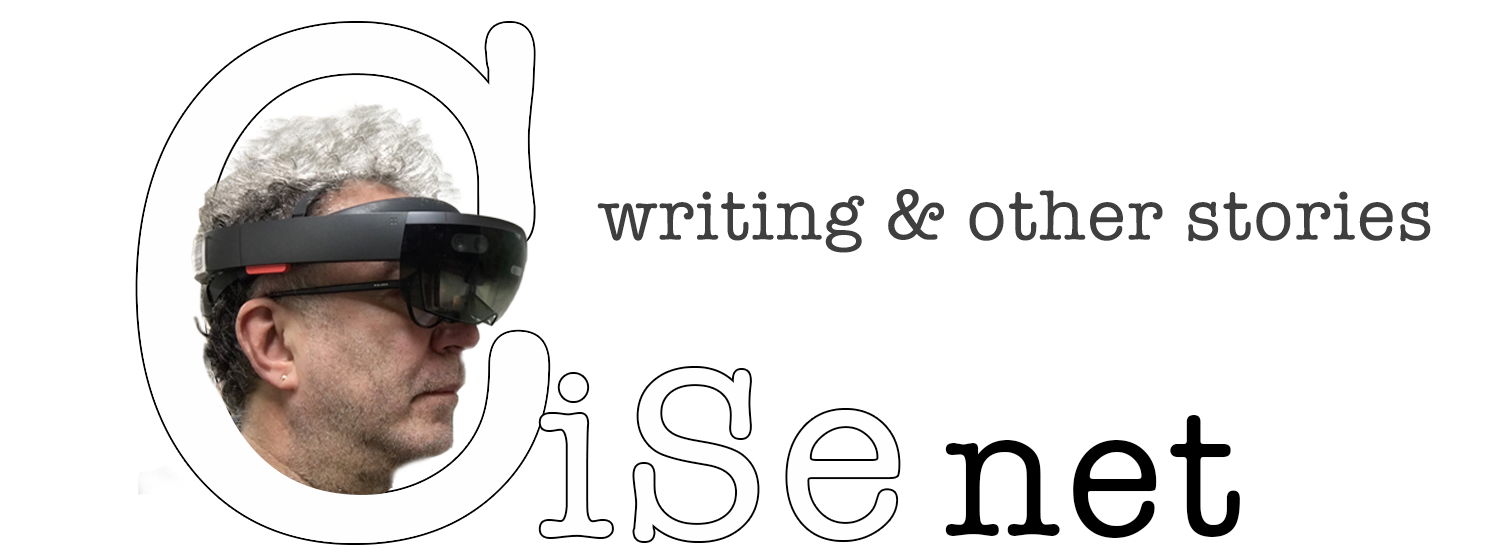



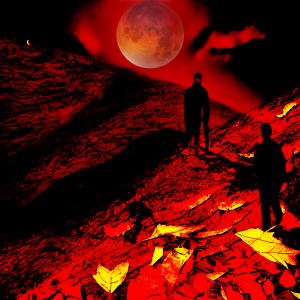
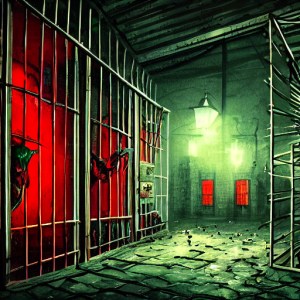

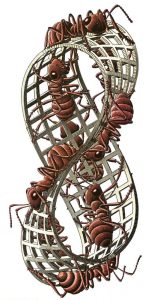

Leave a Reply